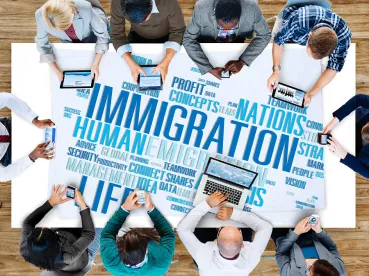In 2017, the U.S. Department of State is on track to issue fewer work visas to Indian and Chinese nationals. With public data available from March 1 to August 31, 2017, it does not appear that Department of State will match 2016 visa issuance numbers[i] with respect to Chinese H-1B visa applicants, Indian H-1B and L-1[ii] visa applicants, or first preference (EB-1) employment-based immigrant visas (green cards for exceptional ability, outstanding research or teaching, or multinational managers and executives):
|
Time Period |
China H-1B |
China - EB-1 (E11, E12, E13, and dependents) |
India H-1B |
India - L-1 |
India - EB-1 (E11, E12, E13, and dependents) |
|
Mar-Aug 2017 Subtotal |
7,023 |
225 |
45,820 |
10,483 |
24 |
|
FY 2016 |
21,657 |
685 |
126,692 |
23,511 |
139 |
|
FY 2015 |
18,306 |
393 |
119,952 |
23,689 |
169 |
In other words, given the pace of visa issuance over the six months reported, it appears that visa issuance has slowed in these major business visa categories. Specifically, Chinese H-1B and EB-1 immigrant visas are both on track to be down over 30% based on the March to August 2017 data. Indian EB-1 visas are on track to be down over 70%, Indian H-1B visas are on track to be down over 25%, and Indian L-1 visas are on track to be down over 10%.
Interestingly, this visa issuance slowdown does not appear to have impacted student visas, second or third preference employment-based immigrant visas (where the sponsoring employer must generally show that there is no available U.S. worker for the position), and fifth preference employment-based immigrant visas (green cards for EB-5 investors):
|
Time Period |
China - F1 |
China - EB-2/EB-3 (E2, E3, and dependents) |
China - EB-5 (C5, I5, R5, T5, and dependents) |
India - F1 |
India - EB-2/EB-3 (E2, E3, and dependents) |
India - EB-5 (C5, I5, R5, T5, and dependents) |
|
Mar-Aug 2017 Subtotal |
91,832 |
208 |
3,901 |
34,707 |
130 |
59 |
|
FY 2016 |
148,016 |
371 |
6,968 |
62,537 |
228 |
90 |
|
FY 2015 |
274,460 |
541 |
7,616 |
74,831 |
246 |
71 |
As such, the decrease appears limited to employer-sponsored categories where the employer is not required to demonstrate that it was unable to find a qualified U.S. worker. In particular, in terms of raw numbers, the impact is greatest on H-1B visa issuance.
Without access to country-specific data concerning visa refusals or administrative processing, it is difficult to pinpoint the exact cause of this decrease. While certainly demand could have dramatically decreased, this is unlikely given that the H-1B category has been immediately oversubscribed for the last five years. More likely, the State Department is either issuing more visa refusals or subjecting more applicants to administrative processing.
Looking specifically at administrative processing, when consular officers determine that they need additional information, documents, or background checks in order to determine the applicant’s visa eligibility, officers will issue a 221(g) notice indicating that the applicant’s visa application has been placed in administrative processing. While in administrative processing, the Department of State will conduct further security checks, and may request additional information or documents from either the visa applicant or the sponsoring employer. While the Department of State indicates that most administrative processing is resolved within 60 days, in many instances it can take much longer.
An increase in administrative processing for employer-sponsored categories that do not require proof of unavailable U.S. workers would be consistent with stated White House policies to develop “extreme vetting” and create policies consistent with the “Buy American, Hire American” executive order. These policies were designed to increase scrutiny on foreign nationals seeking visas, and discourage the use of foreign workers in the United States. Slowing the process through administrative processing would accomplish both of these goals.
While the data above does not conclusively show that employer-sponsored work visa applicants will more likely be subject to administrative processing, it does suggest that possibility in light of recent executive orders. Given this, work visa applicants should at minimum prepare themselves for greater scrutiny and delays at the consulate.
[i] https://travel.state.gov/content/visas/en/law-and-policy/statistics.html
[ii] The Chinese use of the L-1 has historically been low, particularly in comparison to India’s usage. Over 2017, the Chinese L-1 visa issuance has remained consistent with previous years.



 />i
/>i
